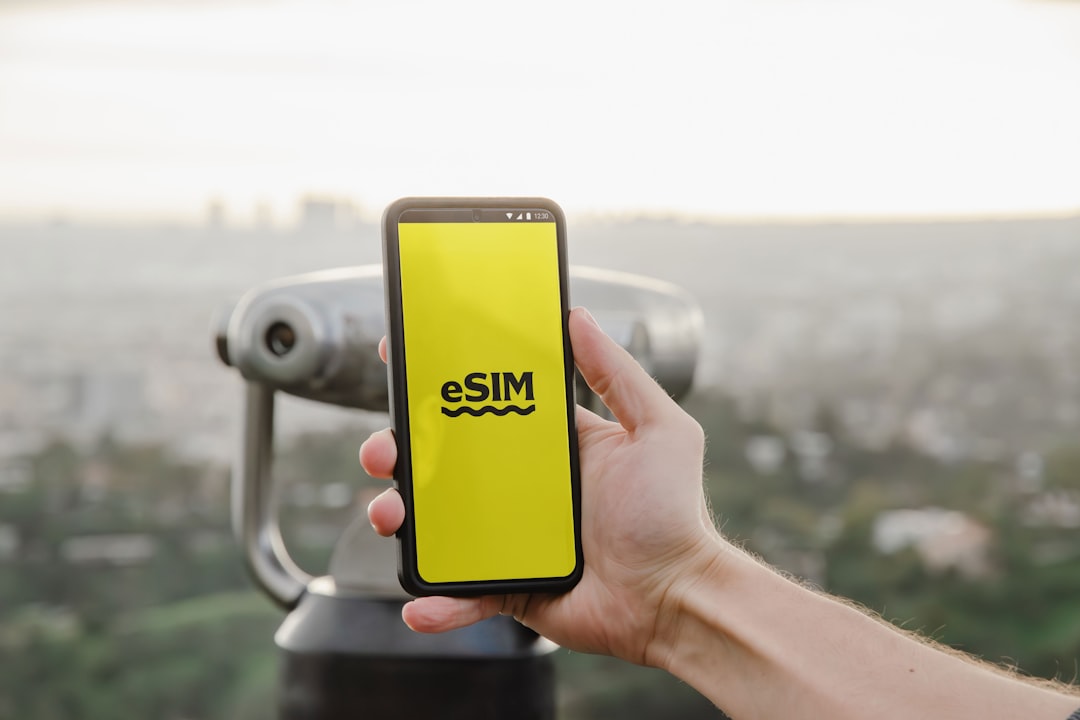International Payment Methods Every Nomad Should Know

Introduction
Living a location‑independent lifestyle means you are constantly moving money across borders. Whether you are paying a coworking space in Bali, receiving freelance income from a client in Canada, or sending money to family back home, the choice of payment method can affect your cash flow, fees, speed, and even your tax reporting obligations. This guide walks you through the most reliable international payment solutions for digital nomads, explains how each works, highlights the pros and cons, and offers practical tips for keeping your finances safe and compliant while you travel the world.
Why Payment Methods Matter for Nomads
- Cost Efficiency – Hidden fees, currency conversion margins, and inactivity charges can erode your earnings quickly.
- Speed – A slow transfer can leave you stranded without cash for rent or transport.
- Accessibility – Some services are unavailable in certain countries or require a local address.
- Security – Fraud, account freezes, and data breaches are real risks when you operate from public Wi‑Fi hotspots.
- Regulatory Compliance – Different jurisdictions have varying reporting requirements for cross‑border payments.
Choosing the right mix of tools helps you stay financially agile, avoid unnecessary expenses, and maintain peace of mind as you hop from one city to the next.
Core Categories of International Payment Solutions
Traditional Bank Transfers
Bank wires have been the backbone of cross‑border payments for decades. They are reliable, widely accepted, and often required for large transactions such as property deposits or business invoices.
How they work
You initiate a transfer from your home‑bank account to the recipient’s bank. The payment passes through correspondent banks, which may add fees and convert the currency at the bank’s exchange rate.
Pros
- High limits and strong regulatory oversight.
- Direct integration with existing accounting systems.
Cons
- Fees can range from $20 to $50 per transfer plus a markup on the exchange rate.
- Settlement can take 2–5 business days.
- Some banks block accounts that show frequent activity in high‑risk jurisdictions.
Global Card Networks (Visa, Mastercard, American Express)
Credit and debit cards issued by major networks are accepted in almost every country. They are essential for everyday expenses such as hotels, restaurants, and online subscriptions.
How they work
When you make a purchase, the merchant’s bank requests authorization from your card‑issuing bank. The amount is converted to the local currency at the network’s exchange rate, and the transaction settles within a few days.
Pros
- Instant payment at point of sale.
- Built‑in fraud protection and chargeback rights.
- Rewards programs can add value for frequent travelers.
Cons
- Foreign transaction fees (often 1–3 % of the purchase).
- Some issuers impose cash‑advance fees for ATM withdrawals.
- Not ideal for large sums due to daily limits.
Digital Wallets and Mobile Payments
Services such as PayPal, Stripe, Wise (formerly TransferWise), Revolut, and N26 have reshaped the way nomads receive and send money. They sit between banks and merchants, offering a smoother user experience.
PayPal
How it works – You link a bank account or card, then receive payments to your PayPal balance. Funds can be withdrawn to a local bank or used directly for online purchases.
Pros
- Widely recognized by freelancers and marketplaces.
- Ability to invoice clients in multiple currencies.
Cons
- Transaction fees of 2.9 % plus a fixed charge per payment.
- Currency conversion markup of around 3–4 %.
- Account freezes are common if activity looks suspicious.
Wise
How it works – Wise provides borderless accounts with local bank details in several regions (US, UK, EU, Australia). You can hold, convert, and send money at the real mid‑market exchange rate, paying a low, transparent fee.
Pros
- Exchange rates are close to interbank rates.
- Fees are typically 0.5–1 % of the amount.
- Transfers arrive in 0–2 business days for most corridors.
Cons
- Not a full‑service bank; no credit products.
- Some countries are not supported for local account details.
Revolut
How it works – Revolut offers multi‑currency accounts, a physical debit card, and a suite of features such as budgeting tools, cryptocurrency trading, and instant peer‑to‑peer transfers.
Pros
- Free currency exchange up to a certain limit each month.
- Real‑time spending notifications.
Cons
- Free tier has limited features and lower ATM withdrawal limits.
- Customer support can be slow during high‑traffic periods.
N26
How it works – N26 is a mobile‑first bank based in Europe that provides a full banking experience with a Mastercard debit card, free SEPA transfers, and low‑cost foreign transactions.
Pros
- No foreign transaction fees on card purchases.
- Seamless integration with accounting apps via APIs.
Cons
- Limited availability outside the European Economic Area.
- No cash deposit options.
Peer‑to‑Peer (P2P) Transfer Platforms
Platforms like Remitly, WorldRemit, and Xoom allow you to send money directly to another person’s bank account or mobile wallet. They are popular for sending funds to family or paying for services in emerging markets.
Pros
- Low fees for small amounts.
- Fast delivery, sometimes within minutes.
Cons
- Not ideal for business invoices or large sums.
- May require the recipient to have a local bank account or mobile money ID.
Cryptocurrency Solutions
Bitcoin, Ethereum, and stablecoins such as USDC provide an alternative route for borderless payments. They can be especially useful where traditional banking infrastructure is weak or heavily regulated.
How they work – You purchase crypto on an exchange, transfer it to the recipient’s wallet, and they convert it to local currency via a local exchange or peer‑to‑peer marketplace.
Pros
- Near‑instant settlement.
- Low transaction fees for on‑chain transfers (especially for stablecoins).
Cons
- Volatility (unless using stablecoins).
- Regulatory uncertainty in many jurisdictions.
- Requires technical knowledge to manage wallets securely.
Money‑Order and Cash‑Based Services
While increasingly rare, services such as Western Union and MoneyGram still play a role in regions with limited digital penetration.
Pros
- Cash pick‑up available in many remote locations.
- No need for a bank account.
Cons
- High fees and unfavorable exchange rates.
- Requires physical presence at an agent location.
Choosing the Right Mix for Your Lifestyle
Every nomad’s financial profile is unique. Below are the key factors to evaluate when building your payment toolbox.
Income Sources
- Freelance platforms (Upwork, Fiverr, Toptal) – Most of these pay via PayPal, direct bank transfer, or platform‑specific wallets.
- Remote employment – Employers often use payroll services like ADP, Deel, or directly deposit into a local bank account.
- Passive income (rental, investments) – May require wire transfers or dividend‑specific platforms.
Destination Geography
- Europe and North America – Wide acceptance of cards, SEPA transfers, and digital banks.
- Southeast Asia – Strong mobile wallet ecosystems (GrabPay, GoPay) and good coverage from Wise and Revolut.
- Latin America – Cash‑based services still relevant; stablecoin adoption is growing.
- Africa – Mobile money (M-Pesa, Airtel Money) dominates; crypto and P2P platforms can fill gaps.
Transaction Size and Frequency
- Small, frequent payments (coffee, coworking) are best handled with a low‑fee card or digital wallet.
- Large, occasional transfers (rent, equipment) benefit from Wise or traditional bank wires to secure better rates.
Regulatory Environment
- Some countries impose strict reporting for foreign currency inflows.
- Residency status can affect which banks will open an account for you.
Personal Preferences
- Desire for rewards points versus minimal fees.
- Preference for a single “all‑in‑one” app versus specialized tools for each use case.
Practical Setup Guide
Below is a step‑by‑step roadmap to get your international payment ecosystem up and running.
Step 1: Secure a Home Base Banking Relationship
Even as a nomad, having a primary bank in a stable jurisdiction simplifies tax reporting and provides a fallback for large transfers. Consider banks that:
- Offer low or no foreign transaction fees.
- Provide online account opening for non‑resident applicants.
- Allow you to order an additional debit card for travel.
Examples include HSBC International, Citibank, and boutique digital banks such as N26 (if you are an EU citizen or have a European address).
Step 2: Open a Multi‑Currency Digital Account
Sign up for a service like Wise or Revolut. Complete identity verification (passport, proof of address) and link your primary bank account.
- Set up local bank details – Obtain a US routing number, a UK sort code, or an EU IBAN depending on the service.
- Fund the account – Transfer a modest amount (e.g., $500) to test the process.
Step 3: Get a Travel‑Ready Debit/Credit Card
Apply for a card that:
- Has no foreign transaction fees.
- Offers chip‑and‑pin and contactless functionality.
- Provides global ATM fee reimbursement up to a limit.
Many digital banks include a card in their standard package; otherwise, consider a no‑annual‑fee credit card from a major issuer.
Step 4: Set Up PayPal (or Alternative Marketplace Account)
If you work through freelance marketplaces, create a PayPal Business account. Link it to your digital bank for easy withdrawals.
- Enable two‑factor authentication.
- Set your primary currency to USD or EUR to reduce conversion steps.
Step 5: Add a Crypto Wallet (Optional)
For those comfortable with crypto, install a reputable hardware wallet (e.g., Ledger Nano S) and a mobile app (e.g., Trust Wallet). Purchase a small amount of a stablecoin like USDC to experiment with cross‑border transfers.
Step 6: Register for Local Mobile Money (If Needed)
When staying for an extended period in a region where mobile money is prevalent, download the local app, verify your identity, and link it to a global wallet that supports cash‑out (e.g., WorldRemit).
Step 7: Document Everything for Tax Purposes
- Keep digital receipts for each transfer (PDFs from Wise, bank statements, PayPal transaction IDs).
- Use accounting software such as QuickBooks, Xero, or the free Wave to categorize income and expenses by currency.
- Periodically export a CSV of all transactions for your tax preparer.
Fee Comparison Snapshot
| Method | Typical Transfer Fee | Exchange Rate Markup | Settlement Speed |
|---|---|---|---|
| Bank Wire | $30‑$50 (flat) | 2‑3 % | 2‑5 business days |
| Wise | 0.5‑1 % of amount | Near‑mid‑market | 0‑2 business days |
| Revolut (free tier) | Free up to limit, then 0.5 % | Near‑mid‑market | Instant (in‑app) |
| PayPal | 2.9 % + fixed fee | 3‑4 % | Instant to PayPal, 1‑3 days to bank |
| Crypto (stablecoin) | <$0.01 on‑chain + network fee | Near‑mid‑market | Minutes |
| Western Union | $5‑$30 + variable markup | 4‑6 % | Minutes to cash pick‑up |
Use this table as a quick reference when deciding how to move money for a specific purpose.
Security Best Practices
- Enable Two‑Factor Authentication (2FA) on every financial account, preferably using an authenticator app rather than SMS.
- Use a Dedicated Travel Device – Install a password manager (e.g., Bitwarden) and keep your financial apps separate from personal browsing.
- Monitor Account Activity Daily – Set up push notifications for any transaction over a chosen threshold.
- Avoid Public Wi‑Fi for Sensitive Operations – Use a reputable VPN whenever you need to log in to banking or crypto platforms.
- Back Up Recovery Phrases – For crypto wallets, write the seed phrase on paper and store it in a secure, waterproof pouch.
- Keep a Physical Backup Card – If your primary card is lost or blocked, a spare can prevent you from being stranded.
Tax Implications for International Payments
Reporting Foreign Income
- US Citizens and Residents must report worldwide income on Form 1040 and may need to file FinCEN Form 114 (FBAR) if total foreign accounts exceed $10,000 at any point in the year.
- Non‑US Tax Residents should consult the tax treaty (if any) between their home country and the country where the income is earned.
GST/VAT Considerations
- If you provide services to EU clients, you may need to register for VAT under the “reverse charge” mechanism, which shifts tax liability to the client.
- Digital services sold to consumers in the EU often require you to collect VAT based on the buyer’s location (MOSS scheme).
Capital Gains on Crypto
- Many jurisdictions treat crypto as property. Record the fair market value in your local currency at the time of each transaction to calculate gains or losses.
Deductions for Travel and Accommodation
- Keep detailed receipts for business‑related travel expenses. Use a separate credit card for work‑related spending to simplify categorization.
Professional Advice
- Because tax laws evolve rapidly, especially regarding digital payments, it is wise to engage a cross‑border tax specialist at least once a year.
Real‑World Scenarios
Scenario 1: Freelance Graphic Designer in Bali
- Income: $4,000 per month from US clients via Upwork.
- Setup: Upwork pays to PayPal, which is linked to a Wise account. The designer withdraws $3,500 to a local Indonesian bank via Wise, paying a 0.6 % fee and using the mid‑market rate.
- Outcome: No foreign transaction fees, cash is available locally within a day, and the designer can pay for coworking space with a no‑fee Revolut card.
Scenario 2: Remote Software Engineer Based in Lisbon
- Income: €6,000 salary from an Irish company, paid via direct deposit to an Irish bank.
- Setup: Engineer opens an N26 account, obtains an IBAN, and receives the salary directly. For occasional travel to South America, the engineer uses a Revolut card to spend without fees and converts euros to Brazilian reais at the interbank rate.
- Outcome: Low banking fees, seamless currency conversion, and easy tax reporting through a single EU bank statement.
Scenario 3: Digital Nomad Teaching English in Mexico
- Income: $2,500 per month from an online tutoring platform that pays via bank transfer.
- Setup: The nomad opens a Wise borderless account, receives the transfer in USD, and converts to Mexican pesos using Wise’s low‑cost conversion. For daily expenses, a no‑fee debit card from Revolut is used.
- Outcome: Savings of over $150 per year compared to traditional bank fees, and the ability to withdraw cash from ATMs without extra charges up to the monthly limit.
Checklist for a Robust International Payment Toolkit
- [ ] Primary home‑bank account with low foreign fees.
- [ ] Multi‑currency digital account (Wise, Revolut, or similar).
- [ ] No‑foreign‑transaction‑fee debit/credit card.
- [ ] PayPal or marketplace‑specific account linked to your digital account.
- [ ] Optional crypto wallet with a stablecoin balance.
- [ ] Mobile money app for regions that rely on it.
- [ ] Two‑factor authentication enabled on all platforms.
- [ ] VPN subscription for secure internet access.
- [ ] Accounting software integrated with your bank feeds.
- [ ] Backup copies of all important passwords and seed phrases.
Frequently Asked Questions
Can I open a bank account without a permanent address?
Many digital banks allow address verification using a temporary rental agreement or a letter from a coworking space. Traditional banks usually require a residential address, but some international banks have “expat” accounts that accept a foreign address.
What is the safest way to carry money while traveling?
Keep the majority of your funds in digital form, accessible via a secure app. Carry a backup debit card in a separate bag and a small amount of cash for places that do not accept cards.
Do I need to report every small transfer to tax authorities?
Reporting thresholds vary by country. In the United States, any foreign account balance exceeding $10,000 at any time during the year must be reported on the FBAR. Other jurisdictions may have lower thresholds.
How do I avoid double conversion fees?
When possible, receive payments in the same currency you will spend them. Use a multi‑currency account to hold the original currency and convert only when needed, using the mid‑market rate.
Is crypto legal for everyday purchases?
Legal status differs by country. In many places, stablecoins are treated as a digital representation of fiat currency and can be used for payments, but you may still need to convert to local cash for certain merchants.
Final Thoughts
International payment methods are the lifeblood of a location‑independent lifestyle. By combining a reliable home bank, a versatile multi‑currency digital account, a fee‑free travel card, and, where appropriate, a crypto wallet or mobile‑money solution, you can navigate the financial challenges of nomadic life with confidence.
Regularly review your fee structures, stay informed about regulatory changes, and keep a meticulous record of every transaction. The right setup not only saves you money but also gives you the freedom to focus on what matters most – exploring new cultures, building your career, and living on your own terms.
Random Posts

Smart Finance Tax and Legal Strategies for Nomads Plus Health and Travel Insurance Plans
Discover how digital nomads can protect earnings and stay compliant with smart tax residency, corporate structures, and the right health and travel insurance, so you can roam worry-free.
1 month ago

Europe's Top Digital Nomad Havens by Region
Explore Europe's best digital-nomad spots, starting with Lisbon's sunny vibe, affordable living, fast 120 Mbps internet and a one-year visa. Choose Alfama's charm, Baixa's cafes or modern Parque das Nações.
6 days ago

Top Apps Every Nomad Needs for Seamless Remote Work
Discover the must-have apps that keep nomads connected: Slack for organized team chat and integrations, Microsoft Teams for unified messaging, video and Office collaboration, plus essential tools for reliable remote work.
2 months ago

Proven Methods To Keep Remote Teams Aligned And Productive
Discover research-backed tactics to align remote teams, boost communication, and sustain productivity across time zones with simple habits, clear rituals and smart tools you can implement today.
3 weeks ago

Where to Live and Work Abroad Top Cities for Digital Nomads
Discover the best cities for digital nomads, ranked by fast internet, affordable living, visa ease, and vibrant culture, plus practical tips to settle in and stay productive wherever you roam
1 month ago
Latest Posts

Essential Software Every Remote Professional Should Use
Master remote work with essential tools: instant messaging like Slack, high definition video calls such as Zoom, and asynchronous voice apps. Streamline communication, stay connected and boost productivity.
1 day ago

Mastering Remote Work Productivity for Digital Nomads and Freelancers
Learn proven habits, tools, and tactics that help digital nomads and freelancers stay focused, deliver quality work, and maintain a sustainable lifestyle while traveling the world.
1 day ago

Tech‑Friendly European Towns Perfect for Remote Living
Discover Europe’s best small towns where fast internet, affordable living and vibrant tech communities let you work remotely while soaking up historic charm, lakeside views or mountain air.
1 day ago